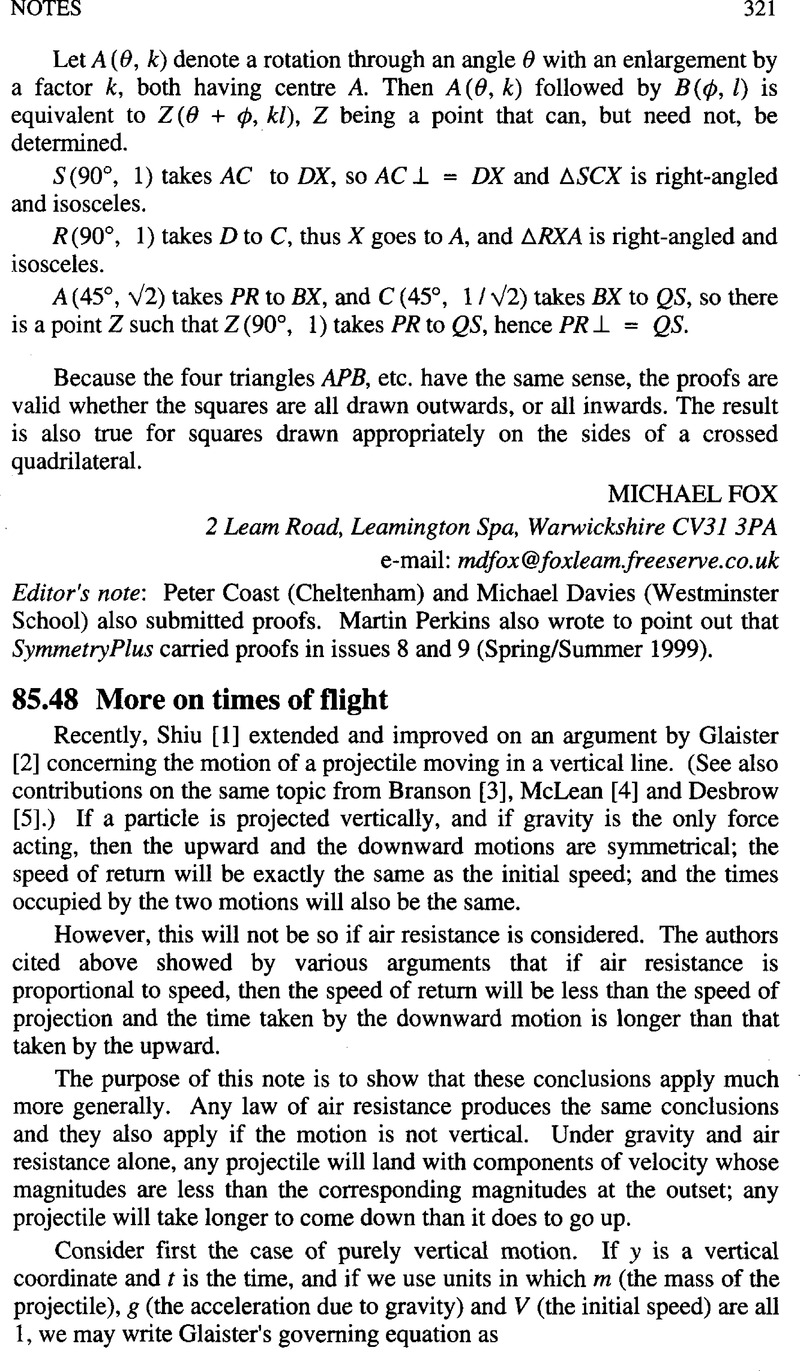No CrossRef data available.
Article contents
85.48 More on times of flight
Published online by Cambridge University Press: 01 August 2016
Abstract
An abstract is not available for this content so a preview has been provided. Please use the Get access link above for information on how to access this content.

Information
- Type
- Notes
- Information
- Copyright
- Copyright © The Mathematical Association 2001
References
4.
McLean, K. R.
What goes up must come down, but it will take longer, Math. Gaz. 75 (1991) pp. 203–204.Google Scholar
5.
Desbrow, D.
ex
– x = ey
+ y or if it goes up will it come down? Math. Gaz. 75 (1991) pp. 204–204.Google Scholar
6.
Littlewood, J. E.
Adventures in ballistics I, II, Math. Spectrum
4 (1971) pp. 31–38, 80–86.Google Scholar
7.
Deakin, M. A. B. and Troup, G. J.
Approximate trajectories for projectile motion with air resistance, Am. J. Phys. 66 (1998) pp. 34–37.Google Scholar

